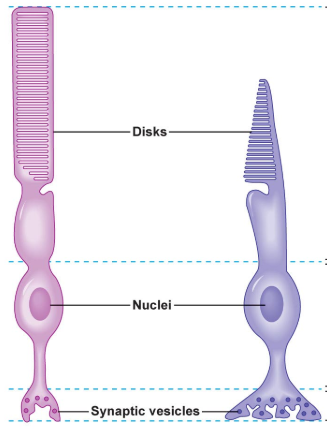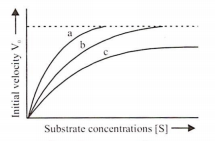 Multiple Choice Questions
Multiple Choice QuestionsGiven below is a table comparing the effects of sympathetic and parasympathetic nervous system
for four feature (a-d). Which one feature is correctly described
| Feature | Sympathetic nervous system | Parasympathetic nervous system |
| a) Salivary glands | Stimulate Secretion | Inhibit Secretion |
| b) Pupil of the eye | Dilate | Constricts |
| c) Heart rate | Decreases | Increases |
| d) Intestinal peristalsis | Stimulates | Inhibits |
Which one of the following animals is correctly matched with its one characteristic and the taxon
| Animal | Characteristic | Taxon |
| Millipede | Ventral nerve cord | Arachnida |
| Duckbill platypus | Oviparous | Mammalia |
| Silverfish | Pectoral and pelvic fin | Chordata |
| Sea anemone | Triploblastic | Cnidaria |
All mammals without any exception are characterised by
viviparity and biconcave red blood cells
extra-abdominal testes and a four chambered heart
heterodont teeth and 12 pairs of cranial nerves
a muscular diaphragm and milk producing
glands.
Which one of the following pairs of the kind of cells and their secretion is correctly matched
| Oxyntic cells | a secretion with pH between 2.0 and 3.0 |
| Alpha cells of islets of Langerhans | secretion that decreases blood sugar level |
| Kupffer cells | a digestive enzyme that hydrolyses nucleic acids |
| Sebaceous glands | a secretion that evaporates for cooling |
D.
| Sebaceous glands | a secretion that evaporates for cooling |
Oxyntic (or parietal) cell is present in the wall of the stomach that produce HCI which forms the part of gastric juice. Oxyntic cell also produce intrinsic factor which is involved in the absorption of vitamin B12 in the small intestine. The pH of gastric acid is 2-3 in the stomach of the lumen. The acidity being maintained by the proton pump, a H+/ K+ ATPase.
Alpha cell ofislets of langerhans secrete glucagon hormone which raises blood glucose level by stimulating liver to convert glycogen to glucose and by stimulating the conservation of fatty acids and amino acids to glucose.
Kupffer cells arc specialized macrophages that disposes of old blood cells and particulate matter. Kupffer cells, named after Karl Wilhem Von Kupffer, are found in the bloodstreams and in the liver, attached to the walls of the sinusoids.
Sebaceous gland is a simple or branched glands in the skin that secrete an oily substance, sebum which is fatty mildly antiseptic material that protects, lubricates, and waterproofs the skin and hair and help prevent dessication.
Examine the diagram of the two cell types A and B given below and select the correct option

A B
Cell A is the rod cell found evenly all over retina
Cell A is the cone cell more concentrated in the fovea central is
Cell B is concerned with colour vision in bright light
Cell A is sensitive to low light intensities
A cricket player is fast chasing a ball in the field. Which one of the following groups of bones are directly contributing in this movement
Femur, malleus, tibia, metatarsals
Pelvis, ulna, patella, tarsals
Sternum, femur, tibia, fibula
Tarsals, femur, metatarsals, tibia
A lizard-like member of reptilia is sitting on a tree with its tail coiled around a twig. This animal could be
Hemidactylus showing sexual dimorphism
Varamus showing mimicry
garden lizard (Calotes) showing camouflage
Chamaeleon showing protective colouration
The figure given below shows three velocity substrate concentration curves for an enzyme reaction. What do the curves a, b, and c depict respectively

a-normal enzyme reaction,
b-competitive inhibition,
c-non-competitive inhibition.
a-enzyme with an allosteric modulator added,
b-normal enzyme activity,
c-competitive inhibition
a-enzyme with an allosteric stimulator,
b-competitive inhibition added
c-normal enzyme reaction
a-normal enzyme reaction,
b-non-competitive inhibitor added
c-allosteric inhibitor added
A person who shows unpredictable moods, outbursts of emotion, quarrelsome behaviour and conflicts with others is suffering from
borderline personality disorder (BPD)
mood disorder
addictive disorder
schizophrenia.
The type of epithelial cells which line the inner surface of Fallopian tubes, bronchioles and small bronchi are known as
squamous epithelium
columnar epithelium
ciliated epithelium
cubical epithelium
